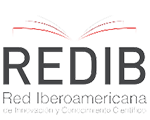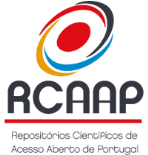Medieval Naturalia: Identification, Iconography, and Iconology of Natural Objects in the Late Middle Ages
DOI:
https://doi.org/10.4000/medievalista.3902Keywords:
Naturalia, Exotica, Animals, Unicorn, TreasuriesAbstract
The nascent global age at the close of the Middle Ages introduced exotic objects from distant lands into Western Europe. Exotica from the natural world – naturalia – were frequently fashioned into ecclesiastical and seigniorial artifacts and housed in treasuries. The materials were sometimes re-identified in their new contexts, such as narwhal tusks understood as unicorn horns, which bestowed upon them additional meanings associated with those allegorical mythical creatures. This work investigates the movement, alteration, and use of such re-identified naturalia in late medieval society leading up to the Age of Discovery. It focuses on naturalia that retained their distinct morphological features after working, following the hypothesis that the identity of the animal, as indexed by a recognizable form or set of physical characteristics, was important. It additionally considers symbolic connotations and occult properties deriving from allegorization of matter to study the role played by the ornamentation of naturalia. This paper explores the discourse between extant tangible objects and contemporary texts such as bestiaries, lapidaries, and alchemical compendia to examine how the iconography of the artifact’s form and the iconology of the ornamentation contributed to the overall signification of the naturalia.
Bibliography
Sources
MAGNUS, Albertus – On Animals: A Medieval Summa Zoologica. Translated and annotated by Kenneth F. Kitchell Jr. and Irven Michael Resnick. Volume 1. Baltimore and London: The Johns Hopkins University Press, 1999.
THEOPHILUS – On Divers Arts. Translated by John Hawthorne and Cyril Stanley Smith. New York: Dover Publications, 1979.
Studies
AINSWORTH, Thomas – “Form vs. Matter”. The Stanford Encyclopedia of Philosophy [Online]. Spring 2016. ZELTA, Edward N. (Ed.) [Accessed 7 February 2018]. Available at https://plato.stanford.edu/archives/spr2016/entries/form-matter/.
BENTON, Janetta Rebold – The Medieval Menagerie: Animals in the Art of the Middle Ages. New York: Abbeville Press, 1992.
BOEHM, Barbara Drake; HOLCOMB, Melanie – “Animals in Medieval Art”. in Heilbrunn Timeline of Art History. [Online]. New York: The Metropolitan Museum of Art, 2000-, last edited January 2012. [Accessed 14 March 2018]. Available at http://www.metmuseum.org/toah/hd/best/hd_best.htm.
BONNE, Jean-Claude – “De l’ornement dans l’art médiéval: VIIe–XIIe siècle; le modèle insulaire”. in BASCHET, Jérôme; SCHMITT, Jean-Claude (Eds.) – L’image: fonctions et usages des images dans l’Occident médiéval; actes du 6e International Workshop on Medieval Societies, Centro Ettore Majorana (Erice, Sicile, 17–23 octobre 1992). Paris: Léopard d’Or, 1996, pp. 207-249.
BONNE, Jean-Claude – “Entre l’image et la matière: la choséité du sacré en Occident”. in SANSTERRE, Jean-Marie; SCHMITT, Jean-Claude (Eds.) – Les images dans les sociétés médiévales: pour une histoire comparée. Bulletin de l’Institut Historique belge de Rome 69 (1999), pp. 77-111.
BRITISH MUSEUM – “Animal Remains.” [Online]. [Accessed 14 February 2018]. Available at
BUCKLOW, Spike – The Alchemy of Paint: Art, Science, and Secrets from the Middle Ages. London: Marion Boyars, 2009.
BUQUET, Thierry – “Animali Extranea et Stupenda ad Videndum: Describing and Naming Exotics Beasts in Cairo Sultan’s Menagerie”. In GARCÍA, Francisco de Asís García; VADILLO, Mónica Ann Walker; PICAZA, María Victoria Chico (Eds.) – Animals and Otherness in the Middle Ages: Perspectives across disciplines. BAR International Series 2500. Oxford: Archaeopress, 2013, pp. 25-34.
COLUMBIA UNIVERSITY – “Griffin’s Claw of St. Cuthbert”. [Online]. [Accessed 14 February 2018]. Available at
http://www.learn.columbia.edu/treasuresofheaven/relics/Griffins-Claw-of-St-Cuthbert.php.
DASTON, Lorraine J.; PARK, Katharine – Wonders and the Order of Nature, 1150-1750. New York: Zone Books, 2001.
DUFFIN, Christopher J. – “Fish, Fossil, and Fake: Medicinal Unicorn Horn”. in DUFFIN, Christopher J.; GARDNER-THORPE, C.; MOODY, R.T.J. (Eds.) – Geology and Medicine: Historical Connections. Geological Society of London Special Publications 452. London: The Geological Society of London, 2017, pp. 211-259.
EAMON, W. – Science and the Secrets of Nature: Books of Secrets in Medieval and Early Modern Culture. Princeton: Princeton University Press, 1994.
ENCYCLOPAEDIA BRITANNICA – “Aurochs”. [Online]. [Accessed 4 April 2018]. Available at https://www.britannica.com/animal/aurochs.
ENCYCLOPAEDIA BRITANNICA – “Bison”. [Online]. [Accessed 4 April 2018]. Available at https://www.britannica.com/animal/bison.
ENCYCLOPAEDIA BRITANNICA – “Ox”. [Online]. [Accessed 4 April 2018]. Available at https://www.britannica.com/animal/ox-mammal-Bos-taurus.
FRICKE, Beate – “Matter and Meaning of Mother-of-Pearl: The Origins of Allegory in the Spheres of Things”. GESTA 51/1 (2012), pp. 35-53.
FRIEDMAN, John Block; FIGG, Kristen Mossler (Eds.) – Trade, Travel, and Exploration in the Middles Ages: An Encyclopedia. New York: Garland, 2000.
GONTERO-LAUZE, Valérie – Les Pierres du Moyen Age: Anthologie des lapidaires médiévaux. Paris: Société d’édition Les Belles Lettres, 2016.
GOTFREDSEN, Lise – The Unicorn. Translated by Anne Born. New York: Abbeville Press, 1999.
GREEN, Nile – “Ostrich Eggs and Peacock Feathers: Sacred Objects as Cultural Exchange between Christianity and Islam”. Al-Masāq 18/1 (2006), pp. 27-78. DOI: 10.1080/09503110500222328.
GUÉRIN, Sarah M – “Forgotten Routes? Italy, Ifrīqiya and the Trans- Saharan Ivory Trade”. Al-Masaq 25/1 (2013), pp. 70-91. DOI: 10.1080/09503110.2013.767012.
HAHN, Cynthia – Strange Beauty: Issues in the Making and Meaning of Reliquaries, 400-circa 1204. University Park: The Pennsylvania State University Press, 2012.
HASSIG, Debra – Medieval Bestiaries: Text, Image, Ideology. RES Monographs on Anthropology and Aesthetics. Cambridge: Cambridge University Press, 1995.
KENSETH, Joy (Ed.) – The Age of the Marvelous. Hanover: Hood Museum of Art/Darmouth College, 1991.
KESSLER, Herbert L. – “The Eloquence of Silver: More on the Allegorization of Matter”. in HECK, Christian (Ed.) – L'alegorie dans l'art du Moyen Age: formes et fonctions; heritages, creations, mutations. Turnhout: Brepols, 2011, pp. 49-64.
KINOSHITA, Sharon – “Animals and the Medieval Culture of Empire”. in COHEN, Jeffrey Jerome (Ed.) – Animal, Vegetable, Mineral: Ethics and Objects. Washington DC: Oliphaunt Books, 2012, pp. 35-64.
KLINGENDER, Francis D. – Animals in Art and Thought to the End of the Middle Ages. Cambridge: MIT Press, 1971.
LAVERS, Chris – The Natural History of Unicorns. London: Granta Books, 2009.
LEVENSON, Jay A. (Ed.) – Circa 1492: Art in the Age of Exploration. Washington, New Haven, and London: National Gallery of Art and Yale University Press, 1991.
LUGLI, Adalgisa – Naturalia et Mirabilia: Les cabinets de curiosités en Europe. Translated by Marie-Louise Lentengre. Paris: Adam Biro, 1998.
MARRACHE-GOURAUD, Myriam – “Les Secrets de la Licorne”. in MONCOND’HUY, Dominique (Ed.) – La Licorne et le Bézoard. Montreuil: Gourcuff Gradenigo, 2013, pp. 396-397.
MAXWELL-STUART, P.G. – The Occult in Medieval Europe, 500-1500: A Documentary History. Basingstoke and New York: Palgrave Macmillan, 2005.
MONCOND’HUY, Dominique (Ed.) – La Licorne et le Bézoard. Montreuil: Gourcuff Gradenigo, 2013.
MUSÉE DU LOUVRE – Le trésor de Saint-Denis. Paris: Réunion des musées nationaux, 1991.
PLUSKOWSKI, Aleksander – “Narwhals or Unicorns? Exotic Animals as Material Culture in Medieval Europe”. European Journal of Archaeology 7.3 (2004), pp. 291-313.
POMIAN, Krzysztof – “La Wunderkammer entre trésor et collection particuliere”. in MONCOND’HUY, Dominique (Ed.) – La Licorne et le Bézoard. Montreuil: Gourcuff Gradenigo, 2013, pp. 17-27.
RECHT, Roland – “Introduction”. in LUGLI, Adalgisa – Naturalia et Mirabilia: Les cabinets de curiosités en Europe. Translated by Marie-Louise Lentengre. Paris: Adam Biro, 1998, pp. 23-29.
ROBERTSON, Kellie – “Exemplary Rocks”. in COHEN, Jeffrey Jerome (Ed.) – Animal, Vegetable, Mineral: Ethics and Objects. Washington DC: Oliphaunt Books, 2012, pp. 91-122.
ROSS, Leslie – Artists of the Middle Ages. Westport and London: Greenwood Press, 2003.
RUDWICK, Martin J.S. – The Meaning of Fossils: Episodes in the History of Paleontology. Second Edition. Chicago and London: The University of Chicago Press, 1985.
SCHRADER, J. L – “A Medieval Bestiary”. The Metropolitan Museum of Art Bulletin 44/1 (Summer 1986), pp. 1-56.
SHEPARD, Odell – The Lore of the Unicorn. London: George Allen & Unwin Ltd., 1967.
STRATFORD, Jenny – Richard II and the English Royal Treasure. Woodbridge: The Boydell Press, 2012.
WEINRYB, Ittai – “Beyond Representation: Things – Human and Nonhuman”. in MILLER, Peter N. (Ed.) – Cultural Histories of the Material World. Ann Arbor: University of Michigan Press, 2013, pp. 172-186.
WEINRYB, Ittai – “Living Matter: Materiality, Maker, and Ornament in the Middle Ages”. Gesta 52 (Fall 2013), pp. 113-132.
ZINK, Michael – “Nature in the Medieval World”. in MYERS, Nicole R. (Ed.) – Art and Nature in the Middle Ages. New Haven and London: Dallas Museum of Art and Yale University Press, 2016, pp. 15-26.




















